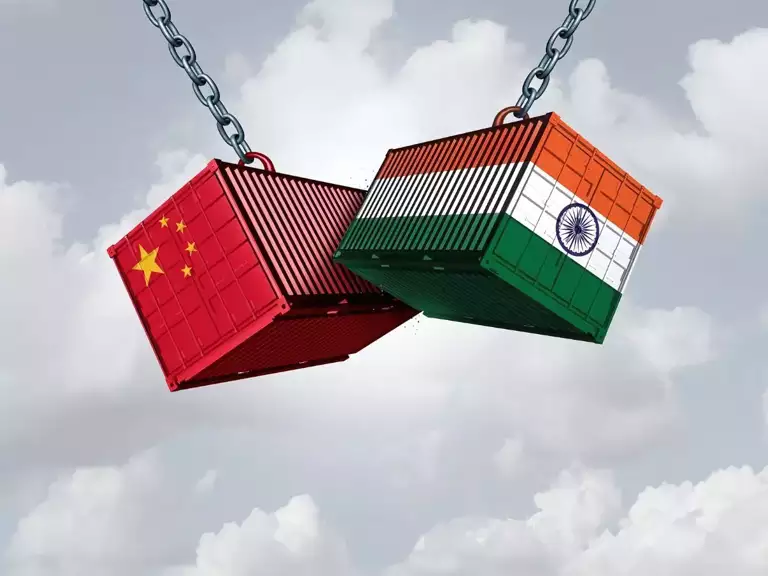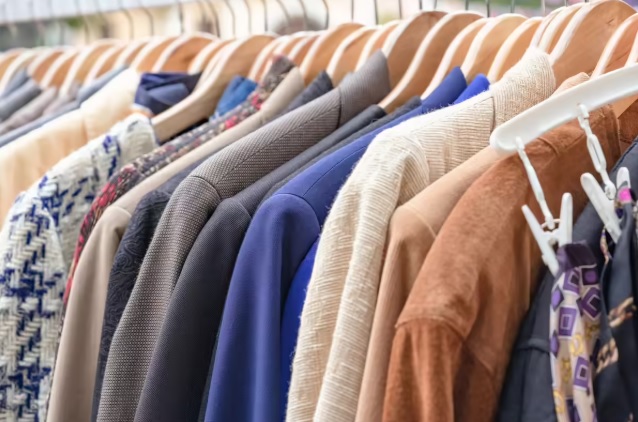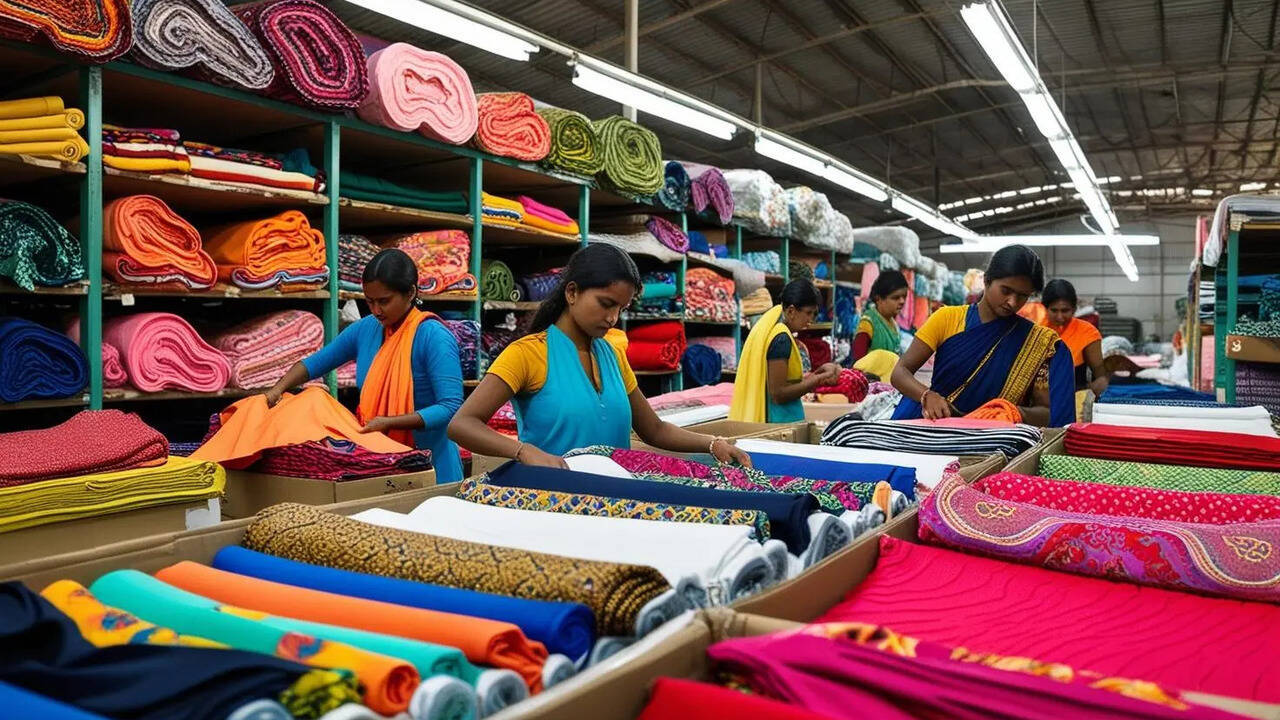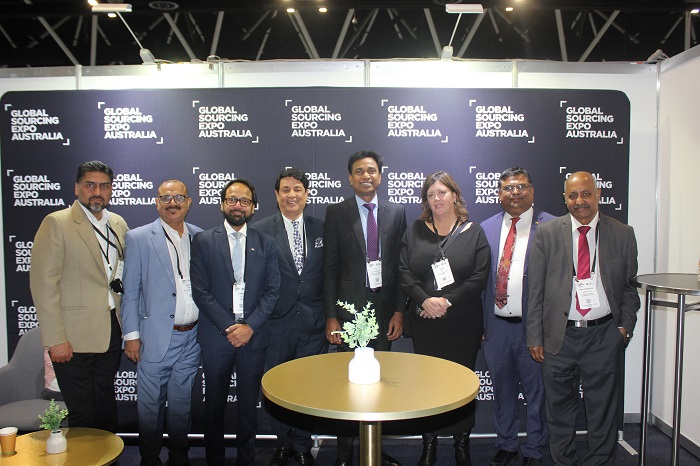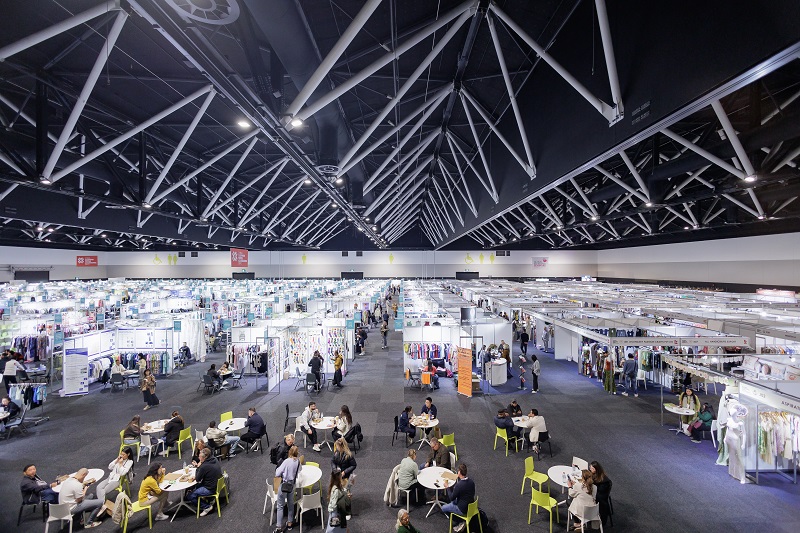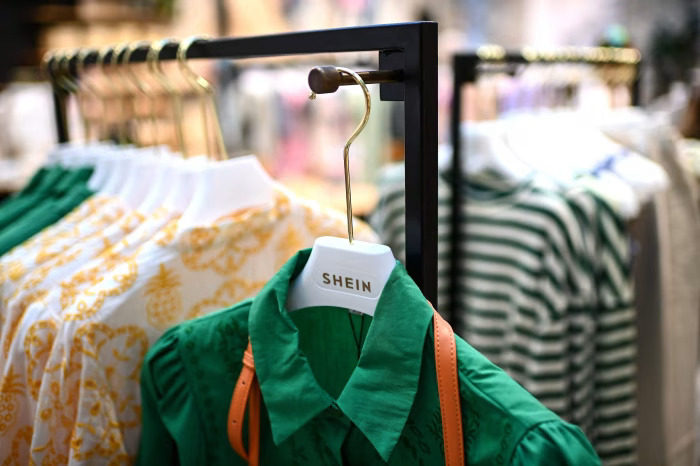FW
To promote opportunities in India for textile machinery manufactures, India’s ITME Society organised a networking dinner at NH Fiera, Milan recently. Industry members, Associations, media and government officials from various countries attended this by invite-only event. The meet saw a good gathering of 17 associations, 36 journalists and above 50 MNCs from 17 countries. Basant K Gupta, India’s ambassador to Italy graced the evening as the chief guest while the guest of honour was Raoul Ascari, Chief Global Development Officer, SACE.
Ascari spoke about the support offered by SACE to Italian companies interested in investing in India, and the presentation generated much interest among the guests, making everyone believe that India and Italy will in future activities benefit from each other in the textile and textile engineering industry.
Gupta highlighted the various textile parks and schemes initiated by the government of India, which is expected to create more opportunities for textile machinery manufacturers and textile companies in India. He also pointed out the Indian’s governments schemes to encourage ‘Make in India’ and the high demand for modern textile machinery in India.
Raju Paithankar, from Indian Textile Technologist made a presentation about the traditional textile fabric of India ‘Pashmina Cashmere’, which is a rare and luxury fibre, and obtained from a specific breed of goats, which survive at a height of 17,000 feet in Ladakh. Two Italian companies, Loro Piana and Reda and Paithankar are together working extensively to produce and promote this traditional fabric from India.
The use of child labor in Uzbekistanʼs cotton harvest is becoming rarer, but there are indications adults are being press-ganged into service this year. In 2012, Uzbekistan banned the practice of child labor following a punishing cotton boycott by leading western brands. Authorities have taken a range of measures to reduce the incidence of child labor and make it socially unacceptable.
Apparent efforts by Uzbekistan to reduce reliance on underage workers prompted the US to promote Uzbekistan from Tier III to Tier II on its watch list. However, the burden of meeting harvest quotas has shifted to adults, who may be recruited against their will though large numbers of citizens seem to be willing recruits and see the harvest as an opportunity.
Organised recruitment of large number of people within such a short period of time carries risks linked to workers’ rights. There are certain indicators of forced labor. Students from colleges and universities take part in the harvest. But there are doubts if they are coming of their own will. Labor has been drawn from the healthcare and education sector and this has had a devastating effect on the quality of public services.
There have been widespread reports of intimidation of civil society campaigners seeking to document abuses in cotton harvesting.
Bangladesh’s earnings from exports to the US saw a robust 15.76 per cent growth during the first quarter of the current fiscal. This represents 20.04 per cent of the country’s total export earnings during the period. Increase in export earnings was mainly due to the good performance of the readymade garment sector.
The US is the largest export destination for Bangladesh’s goods. Major exports to the US market during the period were woven garments, knitwear, frozen shrimps, home textiles and caps. Around 31.94 per cent of Bangladesh’s total woven garment exports entered the US market followed by knitwear at 12.85 per cent.
The 2009-10 fiscal marked the end of an up-and-down period for Bangladesh’s exports to the US. From robust $2.5 billion during the 2000-01 fiscal, exports had fallen below two billion dollars by 2003-04. Exports to the US rose steadily to cross the three billion dollar mark in 2005-06 and peaked at nearly 3.6 billion dollars during the 2007-08 fiscal.
Bangladesh’s export earnings from the US in fiscal 2013-14 were impressive at $5,583.62 million, up from $5,419.60 million in fiscal 2012-13. Exports in 2011-12 were also impressive, totaling $5,100.91 million, slightly down from $5,107.52 million in fiscal 2010-11.
Media reports suggest that South Korea has set a target date of sanctioning of the bilateral free trade agreement (FTA) with China through parliament at November 26, 2015 after a meeting between the government and the ruling Saenuri Party.
Sources claim that the government and the ruling party on Tuesday held an emergency meeting to discuss pending issues, agreeing to ratify the China-South Korea free trade agreement during a parliamentary plenary session scheduled for November 26, 2015. Kim Yong-Nam, spokesman of the ruling party, has said to have expressed that his party and the government will make efforts to run a consultative body with opposition parties to ratify the free trade accord by the target date.
The Saenuri Party, which has a majority in the National Assembly, can ratify the Sino-Korea FTA though opposition parties would be against it. Seoul and Beijing signed their FTA in June after three years of negotiations. Under the deal, the two sides agreed to eliminate tariffs on more than 90 per cent of traded goods each within 20 years after the implementation.
Germany introduced its Partnership for Sustainable Textiles initiative on Wednesday at the joint booth of the German Embassy in Hanoi and the Friedrich-Ebert Foundation in an international exhibition of machinery and materials for the garment industry in Hanoi. The government of Germany aims to provide information related to the pioneering work of the alliance so that interested Vietnamese firms can take part, the German Embassy said in a press release.
The Partnership for Sustainable Textiles was established at the request of the German Minister of Economic Cooperation and Development, Gerd Mueller, in Berlin last year. The initiative, gathering German representatives from multiple economic sectors, federal government agencies and unions, aims to improve the social, ecological and economic supply chain of the garment and textile industry, the release said.
But the real focus of the alliance’s objectives is on textile products being manufactured in better ecological and social conditions. The essence of the alliance’s work is the realisation of projects in the countries involved in garment and textile manufacturing, especially in Asia, and highlighting the unique role textile and garment enterprises have in Vietnam and other regional countries. Without suppliers of very high quality materials in Vietnam and other Asian countries, the final goal of the alliance cannot be reached, said the release.
The Partnership for Sustainable Textiles pays special attention to Vietnam, as the garment and textile industry of the Southeast Asian nation, which is the world’s fourth-largest exporter, makes up 3.7 percent of the global market. The industry accounts for about eight percent of gross domestic product in Vietnam as well as 13-15 percent of the total export value of the country. There are 5,000 Vietnamese companies operating in the industry with 2.5 million employees, according to the release.
The government of Zimbabwe has decided to release about $26 million to procure cotton inputs this season in a bid to restore viability in the sector. Under the arrangement, Agritex has been directed to identify farmers and to distribute planting seed, chemicals and fertilizers while Cottco will be responsible to buy the crop at the end of the season.
Agritex will provide a database of farmers that would have received inputs to Cottco for buying purposes. While government will be the dominant player, private merchants can also buy the crop to the extent of money invested into production. This step signals at the government’s emergence as single player the way it was before the liberalisation of the industry about two decades ago. Government was then the dominant player in cotton marketing through the Cotton Marketing Board. Then, Zimbabwe was among the best in cotton quality at a global scale during the CMB era.
The CMB was privatised in 1994, under the Economic Structural Adjustment Program, which gave birth to Cotton Company of Zimbabwe, a private company working towards the development of the cotton sector in the country. The liberalisation of the cotton industry also resulted in the entry of other private players. However, privatisation of the sector did not work in favour of the country’s cotton cultivation sector.
Ustr.gov
Mincom.gov.bd
The Bangladesh government has decided to establish a separate national body to oversee the post-inspection remedial activities in the readymade garment industry. The aim is also to strengthen the government's capacity so that it can take over the responsibility of the safety initiatives being carried out by the western retailers' groups-Accord and Alliance-- after 2018.
The body will consist of experts and engineers from the Fire Service and Civil Defense, Rajdhani Unnayan Kartripakkha (RAJUK), Department of Inspection for Factories and Establishments (DIFE) and Bangladesh University of Engineering and Technology (BUET). Industry representations from Bangladesh Garment Manufacturers and Exporters Association (BGMEA) and Bangladesh Knitwear Manufacturers and Exporters Association (BKMEA) will also be a part of it.
The core target of such body would be to monitor and supervise all the safety programmes making sure that inspection of all garment factories is done, remedial work takes place properly with all engineering aspects and safety work continues. Accord and Alliance were formed with a five-year plan immediately after the Rana Plaza building collapse in 2013 to create a safe and healthy garment working conditions in the country’s garment industry.
The Cotton Crop Assessment Committee (CCAC) has reduced the estimated cotton target for 2015-16 for the third time to 11.4 million bales, about 25 per cent lower than the earlier estimated 15.49 million bales.
The reasons behind lowered outlook for cotton production are pink bollworm and white fly attacks that massively damaged the crops in regions like Sindh and Punjab, the committee was informed in a meeting attended by representatives of Pakistan Central Cotton Committee, Karachi Cotton Association, Trading Corporation of Pakistan, Pakistan Cotton Standards Institute, and Provincial research and extension officials. The unexpected rainfall also damaged the cotton crops. Farmers were reluctant to use fertilisers and pesticides due to low cotton prices last year, which consequently led to poor crop management this season, the officials told the committee.
The government set the target for 2015/16 at 15.49 million bales from 7.7 million acres. The CCAC scaled down the target for the second time to 13.38 million bales for the current season. The cotton target in Punjab was projected at 10.5 million bales from six million acres but has registered a downfall of 6 per cent and is estimated at just 5.6 million acres. Similar situation prevails in the Sindh region where the produce was projected to be 4.4 million bales from 1.6 million acres. But the crop was sown in just 1.4 million acres resulting in reduced targets by 10 per cent.
The Khyber Pankhtunkhwa and Balochistan regions have also missed their estimated cotton cultivation targets due to pest attacks. Cotton growers feared 50 per cent crop damage due to the cotton leaf curl virus (CLCuV) and whitefly attacks in Multan and Khanewal.
Cotton.par.com.pk
At the second annual meeting of the Bangladesh-US Trade and Investment Cooperation Forum Agreement (TICFA) held on Monday in Washington, Bangladesh has expressed that the newly formed Trans-Pacific Partnership (TPP) may have an adverse impact on the country’s exports.
The Bangladesh embassy in Washington, in a statement, said Dhaka believed this TPP might “adversely impact” its exports to the US and some other TPP countries. The US, Australia, Canada, Japan, Malaysia, Mexico, Peru, Vietnam, Chile, Brunei, Singapore and New Zealand are the members of the recently formed TPP. However, US Embassy’s Deputy Chief of Mission David Meale had earlier said before the TICFA meeting that if “Bangladesh decides it is willing to meet the overall TPP standards, it might one day wish to signal interest in joining”.
Commerce Secretary Hedayetullah Al Mamoon led the Bangladesh side while Assistant US Trade Representative Michel Delany headed his side in the TICFA meeting. They discussed issues including progress on workers’ rights, Sustainability Compact and GSP Action Plan, investment climate in Bangladesh, transformation of Bangladesh, market access and responsible business conduct. The meeting also deliberated on the Istanbul programme of action, Bali package implementation, fair pricing, TPP, blue economy, and infrastructure, among other things.
Bangladesh presented the progress it had made in workers’ rights, and factory safety norms. It also urged the US to grant duty- and quota-free market access to its products as per Hong Kong Ministerial Declaration and Bali package, adopted in Bali WTO Ministerial.
Ustr.gov
Mincom.gov.bd
The state of Rajasthan is emerging as one of the most important textile hub and owing to the labour-intensive nature of the sector, the state government has identified it as one of the thrust areas.
At an event held in New Delhi recently, the Rajasthan government signed MoUs worth Rs 2,530 crores with several private companies eyeing establishments in various textile units. The move is expected to generate about 8,000 direct jobs as well as thousands of indirect ones. The investment proposals received by the government covers wide spectrum of the textile industry such as technical textile, recycled fibre, spinning, yarn, seamless garments and denim fabric, among others.
Rajasthan has also emerged as the largest producer of polyester viscose yarn and synthetic suiting material in the country with Bhilwara becoming the leading centre of production. While Barmer has been added in the list of towns of export excellence, Pali and Balotra are developing as centres textile processing. Besides PV suiting, the state has also made a name for itself in the processing of low-cost and low-weight fabric. Bhilwara and Kishangarh are major power loom centres in the state with over 20,000 functional looms and over 95 crores metres of different blends of polyester fabrics such as polyester wool, polyester viscose modal, and polyester viscose elastane produced annually in the state.
And other places like Jodhpur, Pali, Sanganer, and Kota are popular for traditional handloom, fabric and printing and Jaipur for fashion garments. Apart from these industries, quality cotton cultivation is also being promoted in the districts of Bhilwara, Chittorgarh, Ajmer, Jodhpur, Bikaner, Nagaur, Ganganagar and Hanumangarh. And the quality of wool produced in the western belt is ideal for carpet weaving. The Centre has established Wool Development Board of India, headquartered in Jodhpur for growth and development, marketing, testing of raw materials, marketing intelligence, price stabilisation, product development, and for advising the government on policy matters and coordination.
owing to the importance and potential of the textiles sector in the state's economy, textiles, including technical textiles have been included in the state's list of thrust sectors in the Rajasthan Investment Promotion Scheme, 2014. Six integrated textile parks have also been sanctioned in Rajasthan with product categories ranging from hand printed fabrics, garments, weaving, spinning, and carpets to textile processing units.
Rajasthan.gov.in



